light sources
directional light
Light is coming uniformly from one direction independently of the object position. The object’s color depends on 3 parts:
- light color
- light direction
- surface direction(
normal) - object’s original color
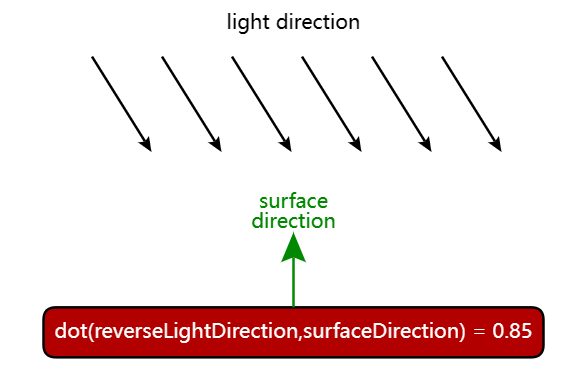
let theta be the angle of reverse of light direction and surface direction, then:
1 | reflection color = light color x original color x cos(theta) |
point light
Same as directional light with only one difference: the light direction is on longer fixed. It points from light’s position to object’s position. So we need to calculate each vertex’s light direction(usually do it in fragment shader).
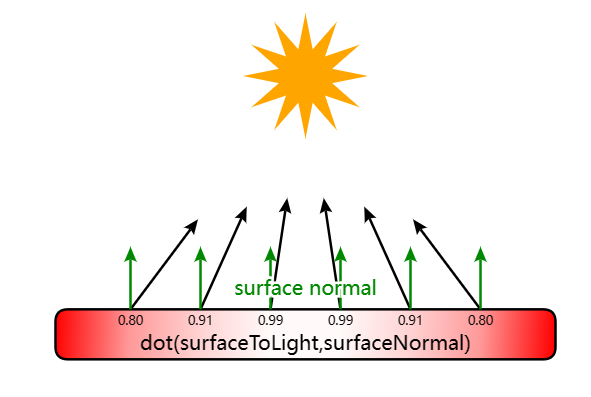
ambient light
In reality, we can see objects without point light or sunshine. That’s what ambient light do. Calculation of ambient reflection color is very simple:
1 | reflection color = light color x original color |
We see the same color from all directions.
spot light
Point light goes in all directions from that point while spot light has a limit range. Within that range we light the same as point light otherwise we don’t light at all. We set a specific direction for the spot light with a angle range symmetrically distributing around it. From this angle limit, we compute a dot limit.
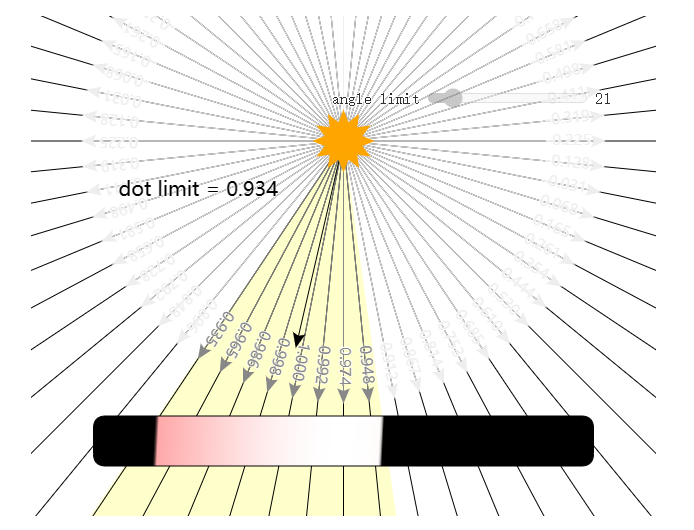
1 | dotFromDirection = dot(surfaceToLight, -lightDirection) |
reflection types
diffuse reflection
For rough surfaces, the light reflects uniformly in all directions, i.e. we see the same color from all directions. This is diffuse reflection which is used in directional light and point light.
specular reflection
As opposed to diffuse reflection, if the surface is shiny like a mirror, it looks brightest from a special direction:
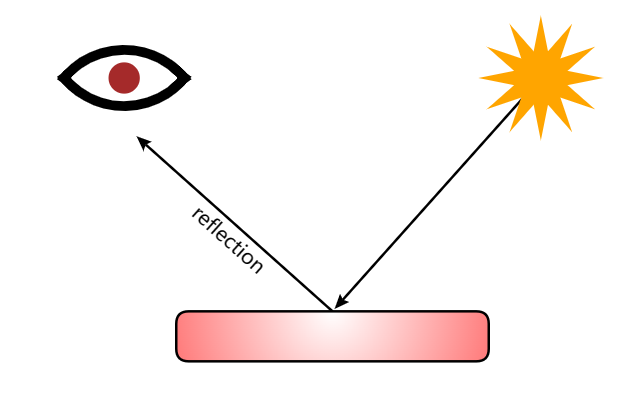
The computation of specular reflection color is as follows:
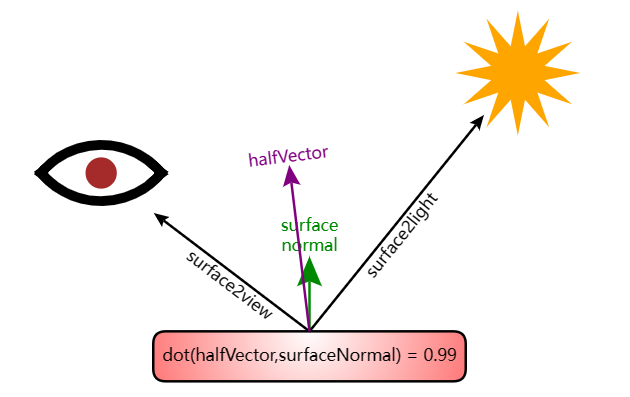
1 | float specular = dot(normal, halfVector); |